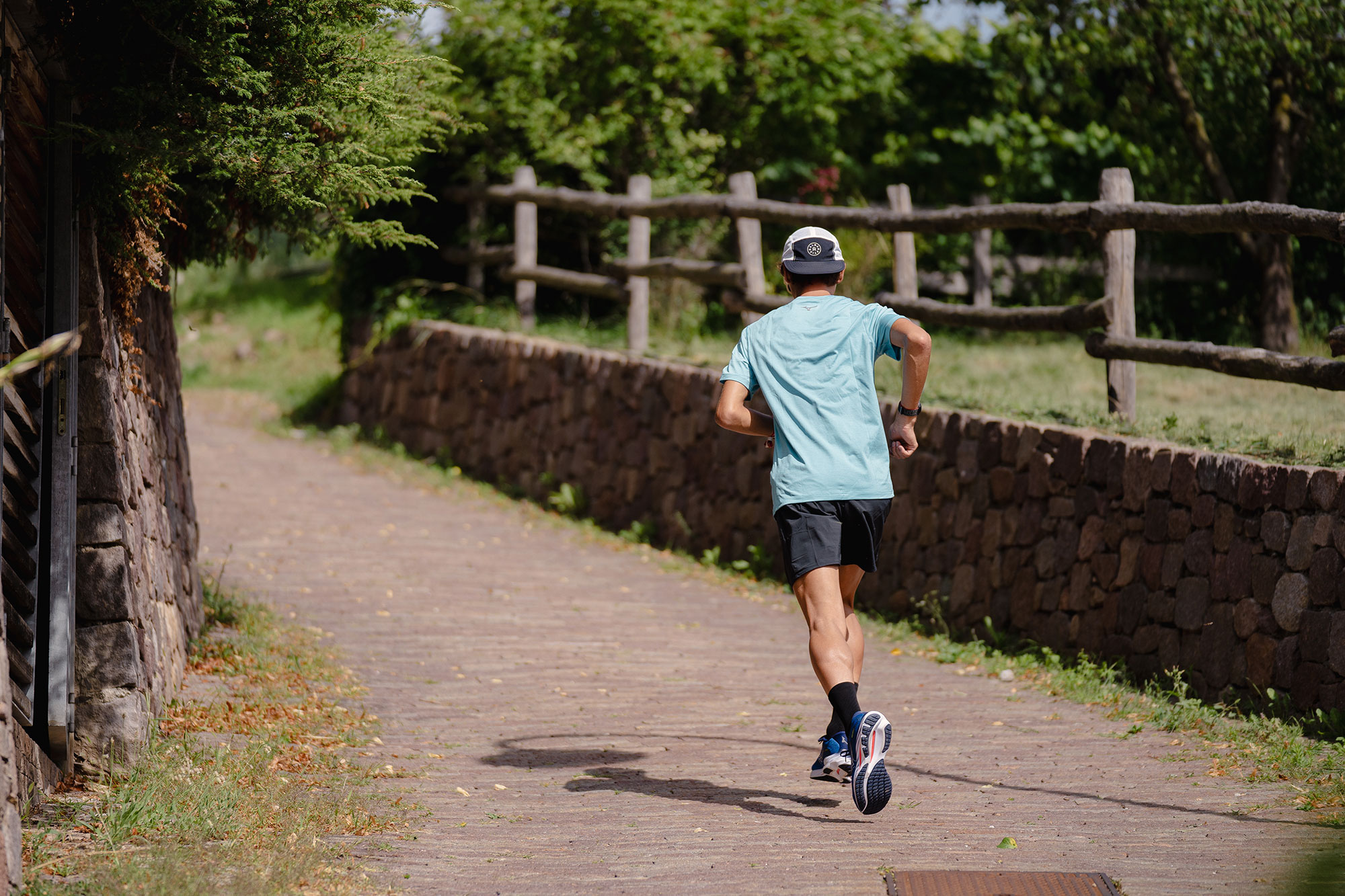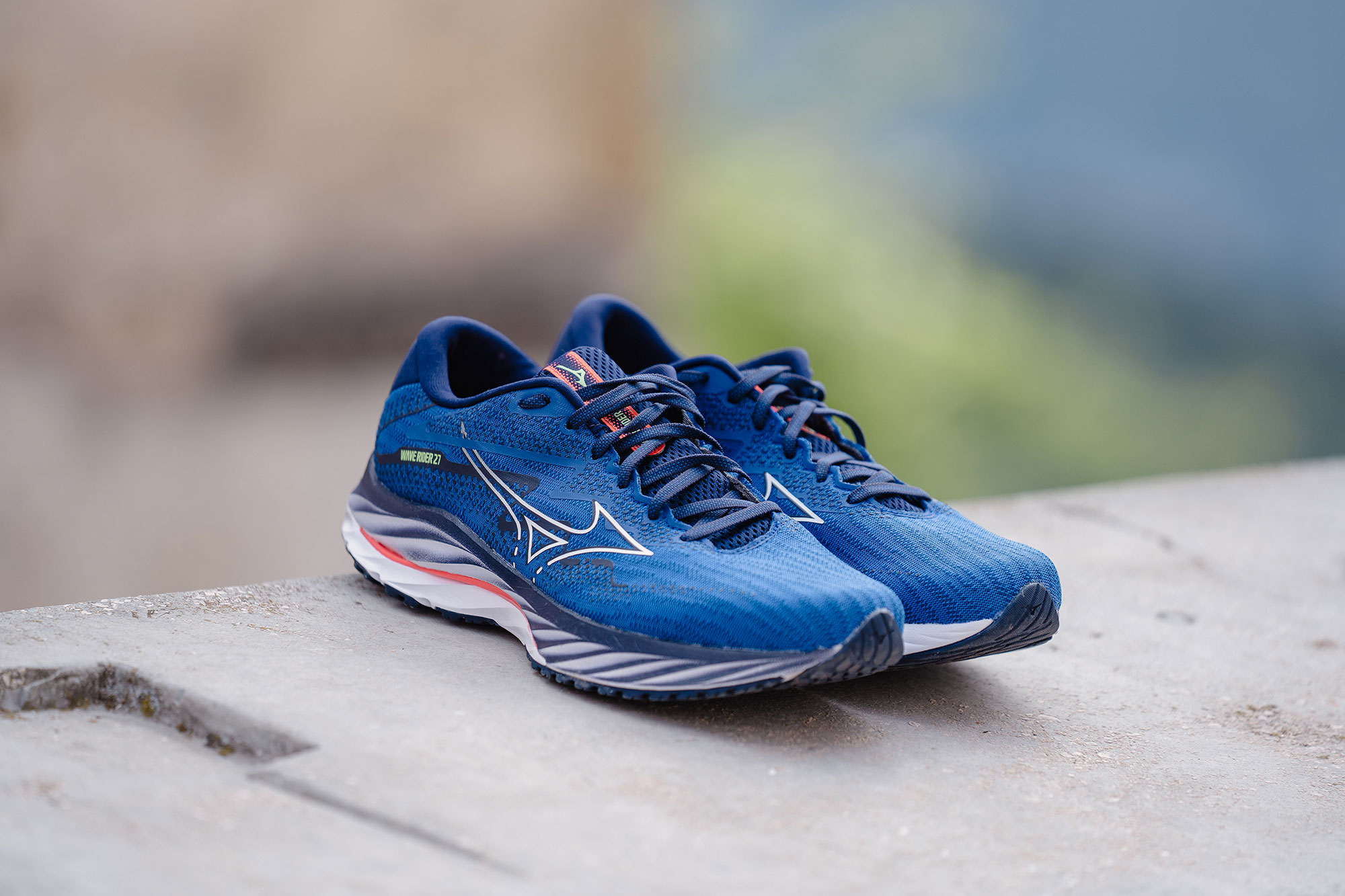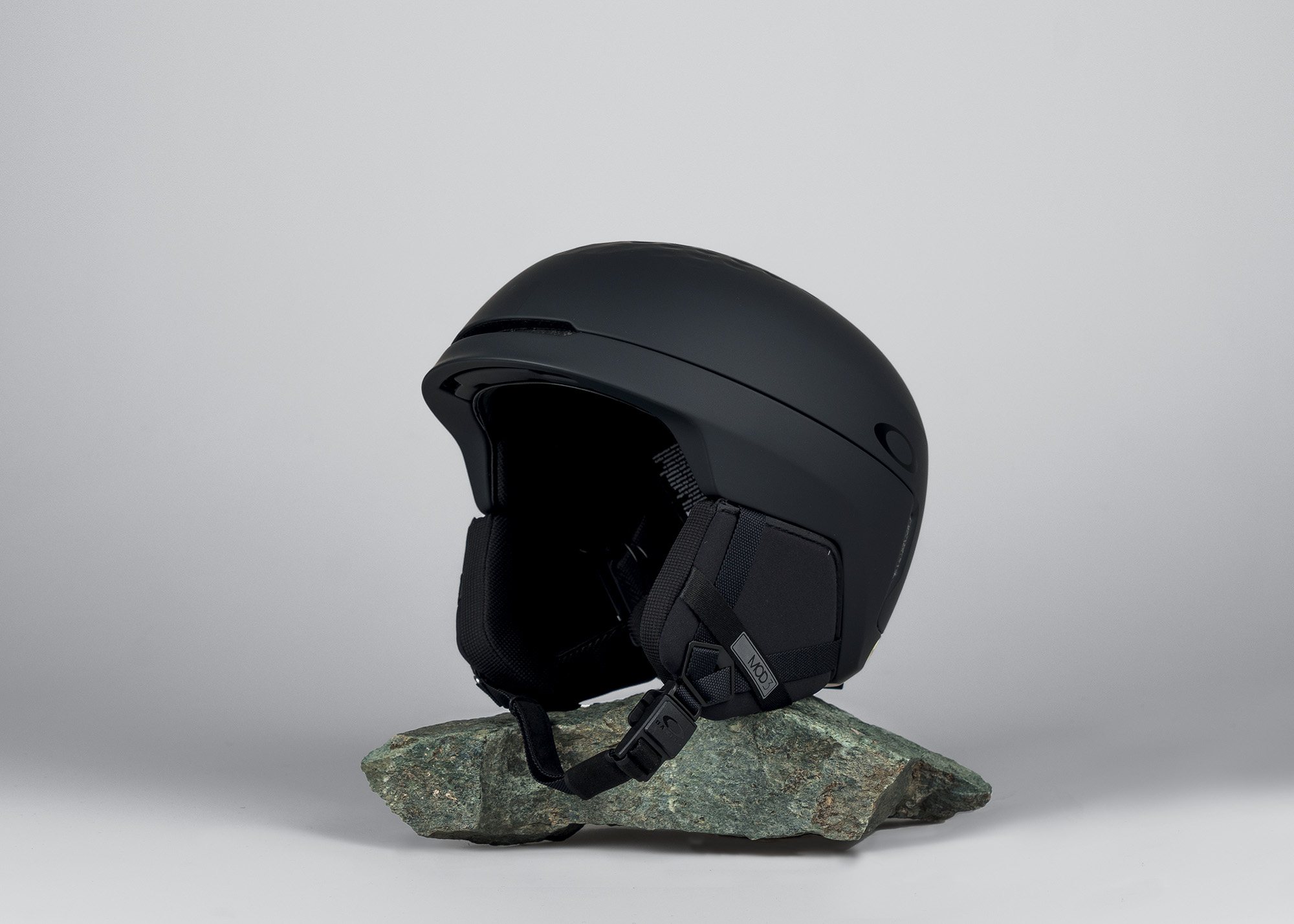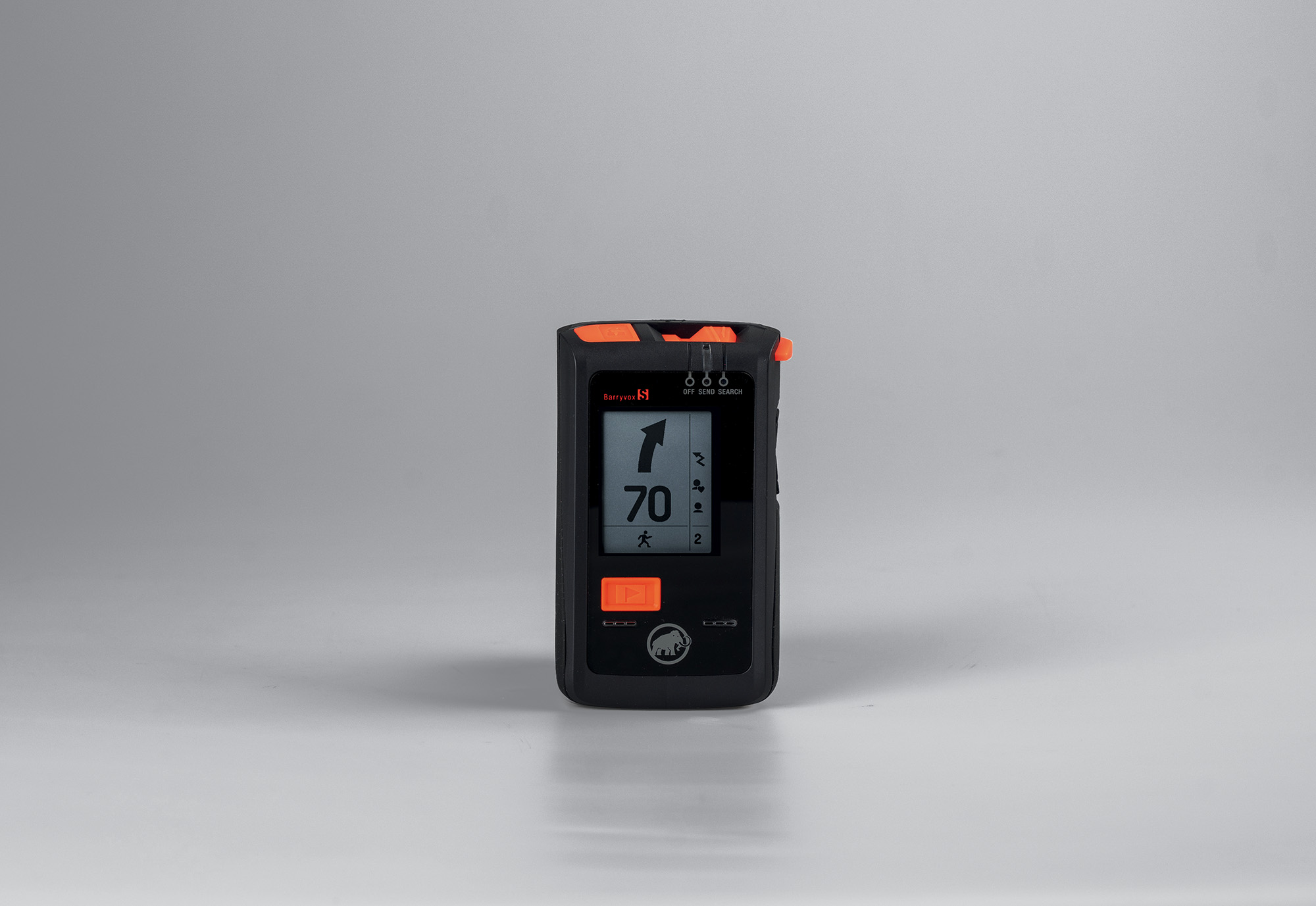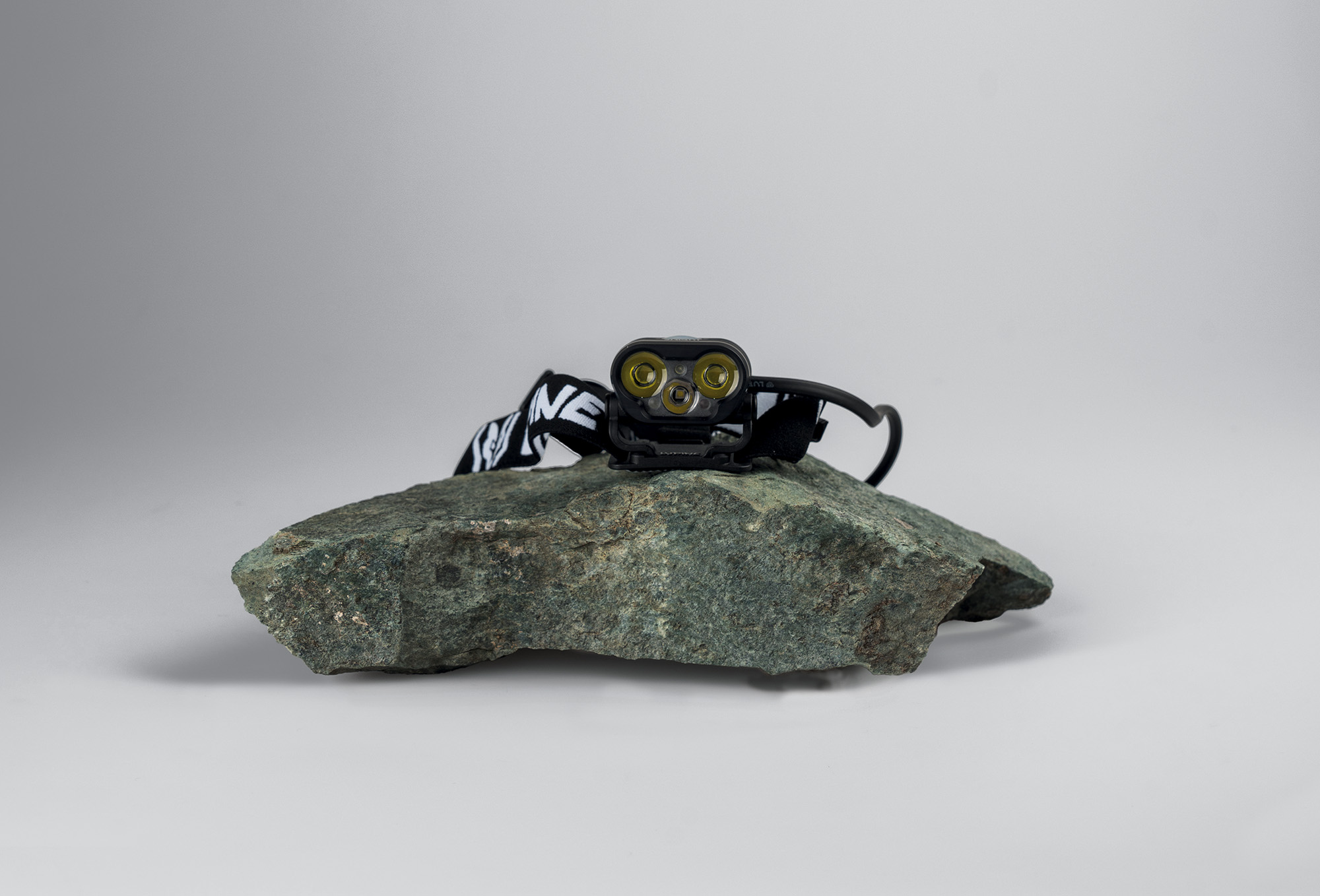Mizuno Wave Rider 27 Test
New mizuno wave rider 27
Wave Rider has been Mizuno ‘s dedicated daily training and racing model for 27 years for amateurs who seek protection combined with dense, stable foam that accommodates the roll throughout the foot transition. We tried them on hilly terrain and on long marathon dirt roads, and here we are after a few miles telling you our impressions.
Who said that ‘old school’ is necessarily a negative aspect? True, the market in recent years has accustomed us to lighter and lighter products, with less arch support, with increasingly cushioned and sprung foams: fast, no doubt, but more unstable and unsuitable for all those runners seeking protection and support, for running at a sustained but not very fast pace. For all these people (meaning all those who would run a marathon between three hours and three and a half hours, which are then most people) there are the Mizuno Wave Riders, now in its 27th edition.
Specifications
Brand: Mizuno
Model: Wave Sky 27
Launch: summer 2023
Usage: Road, marathon, long, fartlek, road ultramarathon
Weight: 310gr
Price: 160.00
Drop: 12mm
Fit: Fasciante
Upper: Mesh
Midsole: Mizuno Wave + Mizuno Enerzy Foam + Mizuno Enerzy
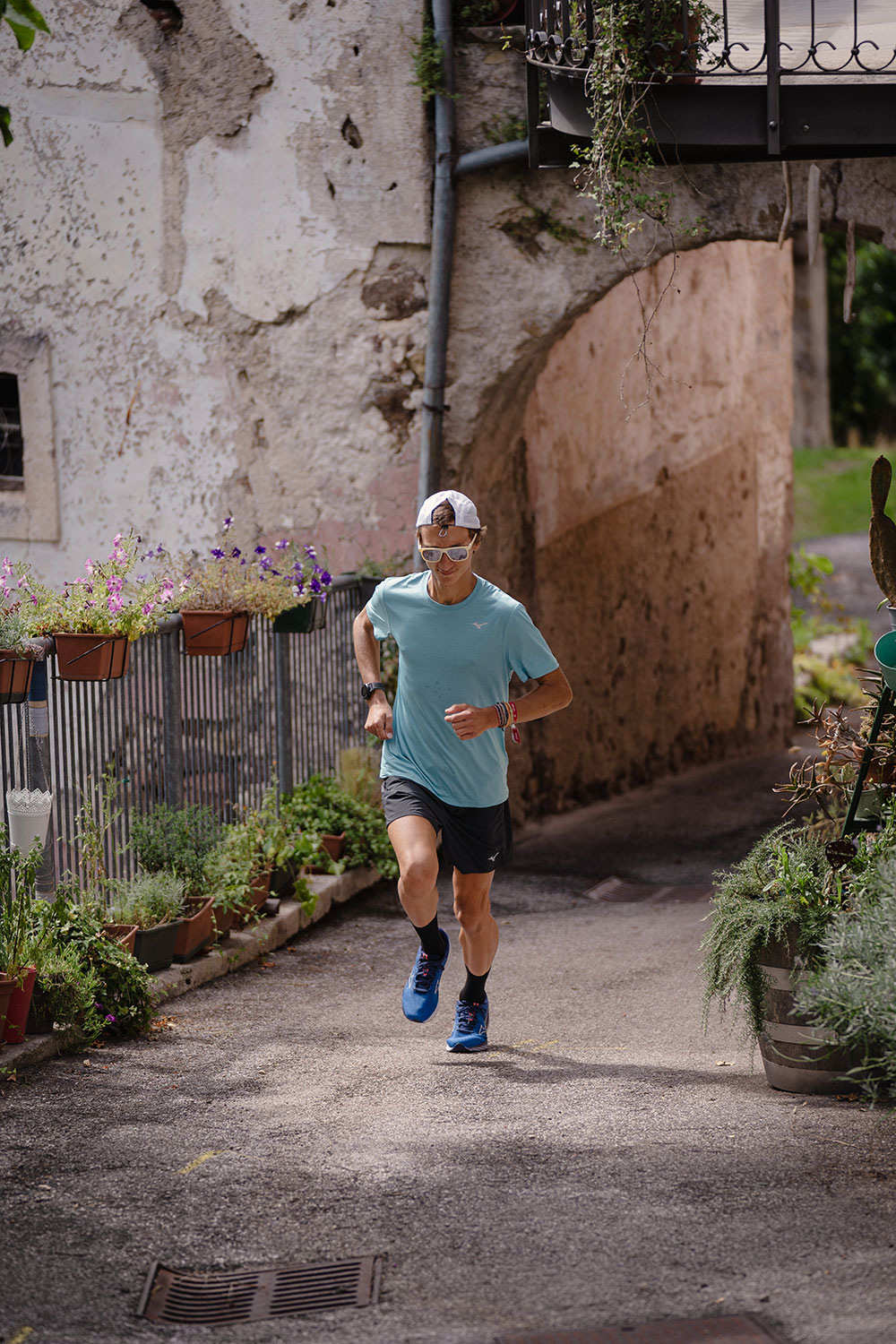
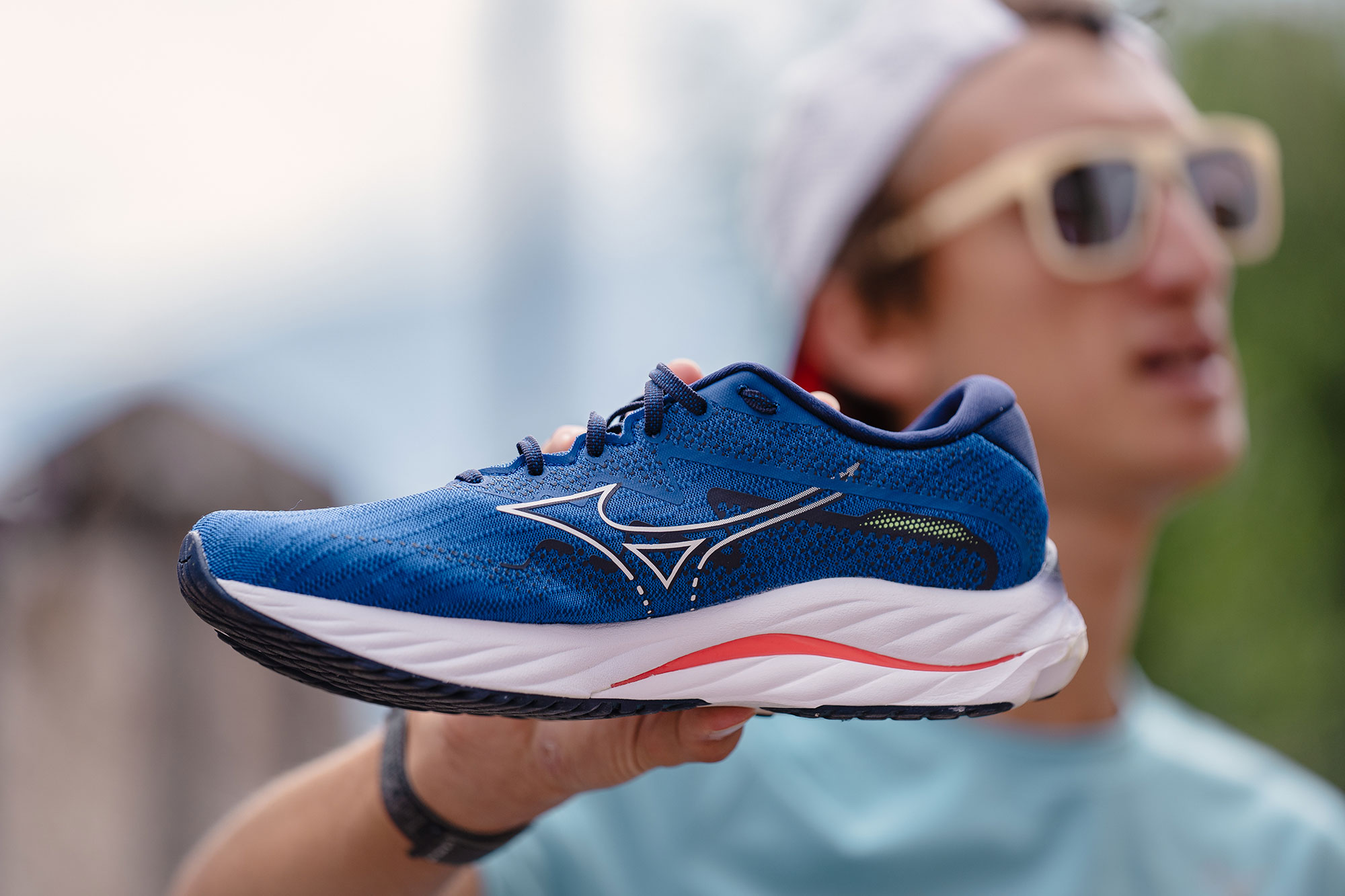
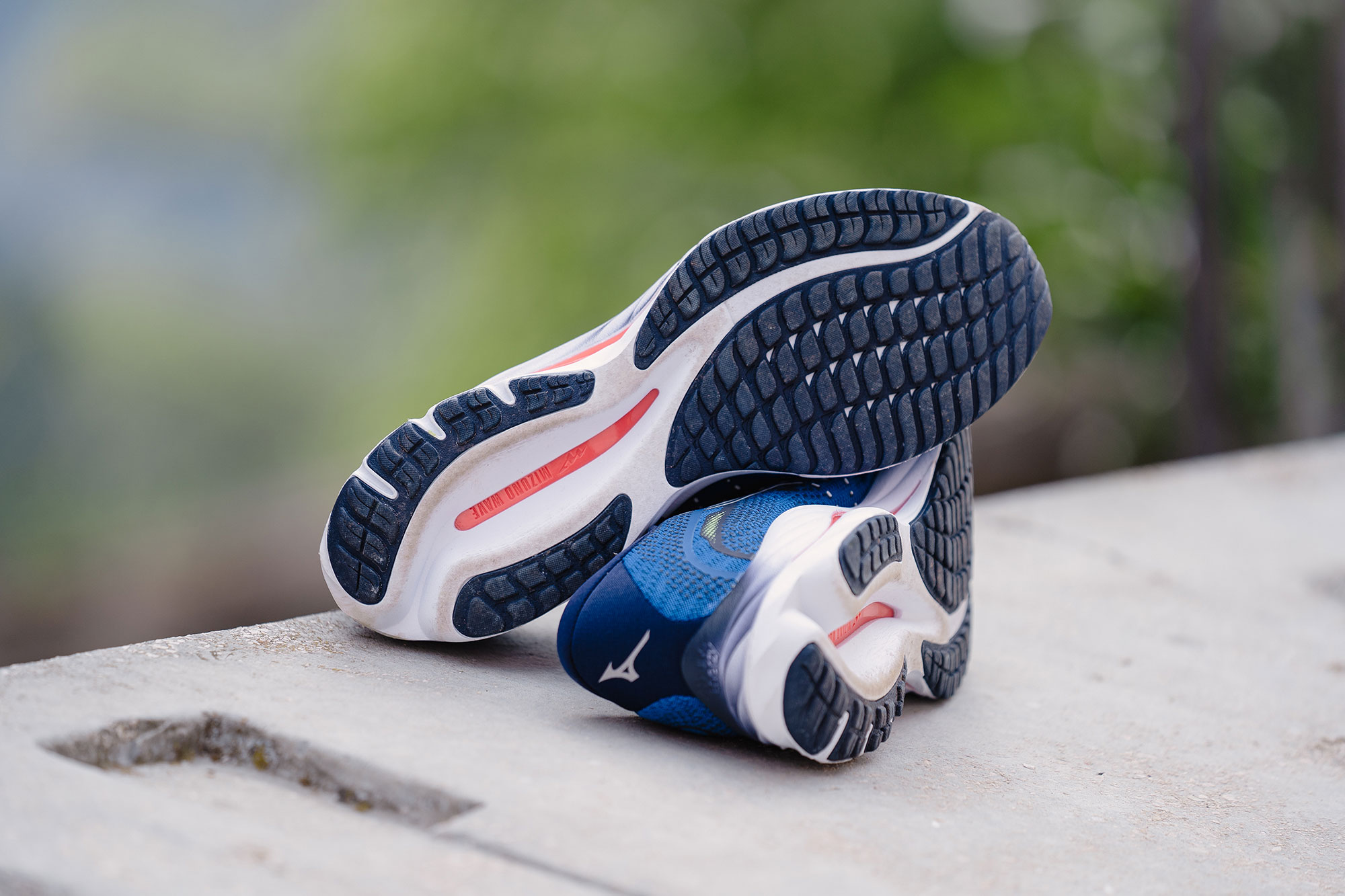
The shoes
Wave Rider 27 does not differ much from the previous model in terms of structure and support. It remains a stable model with great support in both the rear and arch support, with a fairly carriage-like structure on top and a midsole that is balanced in terms of weight, cushioning and responsiveness. The sole compartment remains unchanged, while the main changes mainly involved the upper, which was revised and redesigned. But let’s look at each part in more detail.
Upper
As we said, the main changes in the new Mizuno Wave Rider concern the upper. It is made of 90% recycled mesh with a tight weave but soft stretch effect, reinforced with a TPU dot pattern applied to the midfoot, which strengthens the structure. The fit is very snug, both at the collar and forefoot, but thanks to the stretch material it does not constrict the foot: it wraps around it and holds it in place, but without squeezing it. Also contributing to the overall comfort is the heavily padded tongue, which protects the neck from the laces, designed with a six-hole system (seven with the double top eyelet) that works very well by evenly stretching the entire upper. Comfortable, padded collar and heel reinforced by a solid shell that internally locks the heel and limits its twisting during pronation.
INTERSole
The midsole maintains the features and design of the previous version: coupled two foams, Enerzy Foam over the entire length of the shoe, and Mizuno Enerzy insert on the heel and midfoot. The difference in the two foams, both made of ethylene vinyl acetate, which we know as EVA, lies not so much in a difference in material but in the density of the foam, which thus allows for a more even heel-to-toe transition, cushioned posteriorly and stable over the entire roll, suitable for runners with a wide variety of leanings: heelers, prone accentuated pronators, neutrals. The two foams are divided in the medial part by an insert called Wave Plate, which is an insert made of recycled plant material that gives stability and structure to the ride.
OUTSOLE
Mizuno road shoes are always distinguished by the grip of the sole: where other brands try to file millimeters down inevitably reducing both the durability and grip of the shoe, Mizuno prefers soles, albeit open and lightened, that are nonetheless plugged and well pronounced. The sole of Wave Rider is made of four pieces arranged at the pronation and supination support points of the foot. The result is great grip both on asphalt, even wet asphalt, and on dirt roads and forestry, where you happen to run fartleks or long hills.


Why we like them
We like them because they are a versatile model: they wink at the runner who leans heel-to-toe and has a pronounced tendency toward pronation, but they can also give support to lighter, more precise runners for long races where, after so many hours, the gesture changes and becomes heavier and more support is needed.
What we didn’t like
It is a shoe that does not have many faults, but its features can be positive or negative factors depending on the wearer. If you’re looking for a lightweight, neutral shoe, it’s not the shoe for you, but it doesn’t want to be either: if you’re looking for this type of shoe, it’s the one for you.
Conclusions
Times move on, materials change, and the market evolves, but running always means putting one foot in front of the other, and, statistically, 95 percent of people who are on the starting line of a marathon will run it in more than three hours, an equally high percentage of people will do so running with pronounced pronation, in all those cases, this may be the shoe you need.
